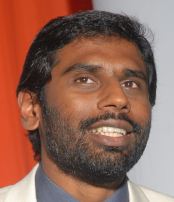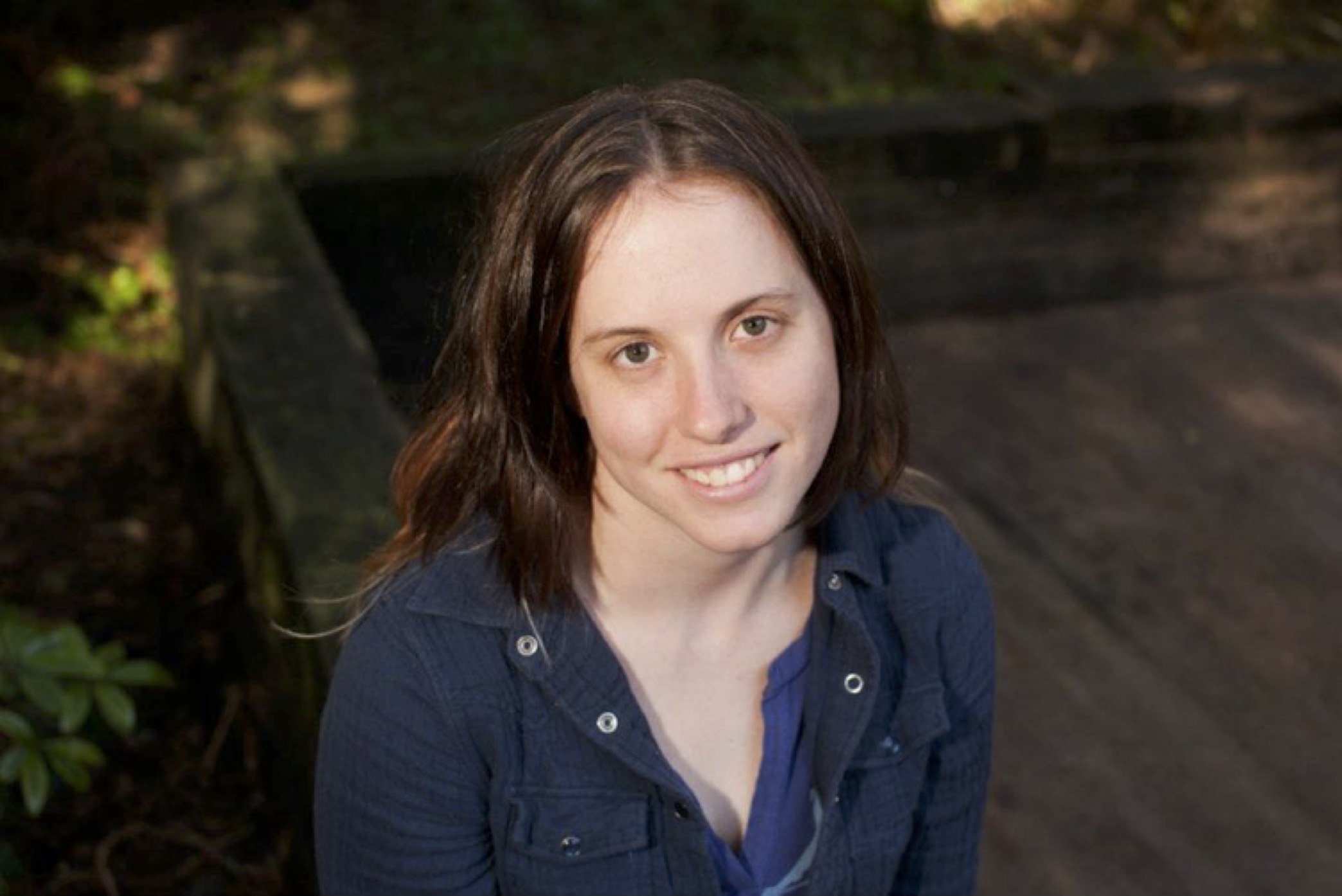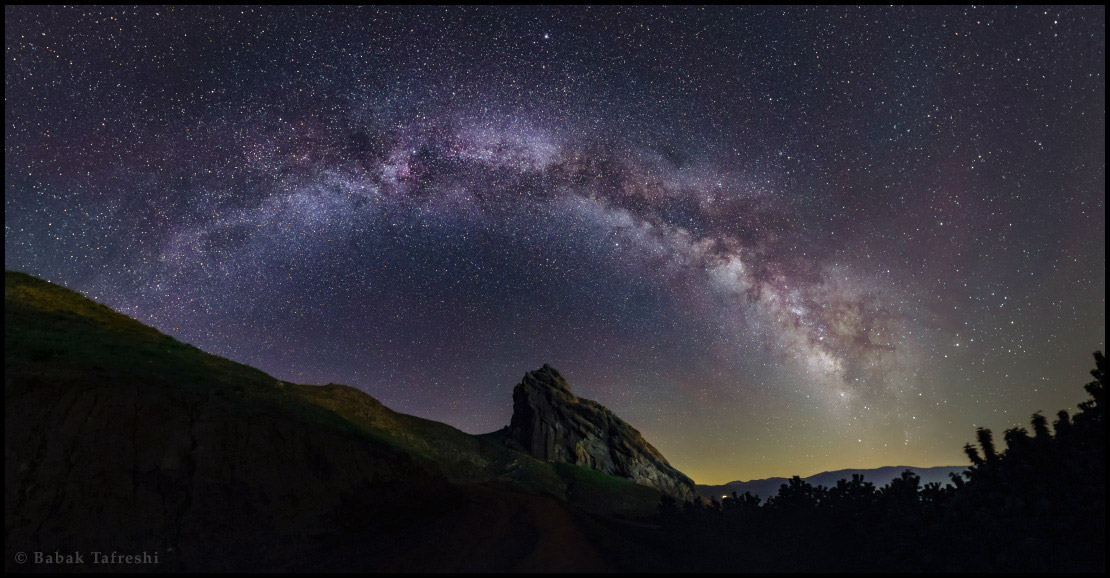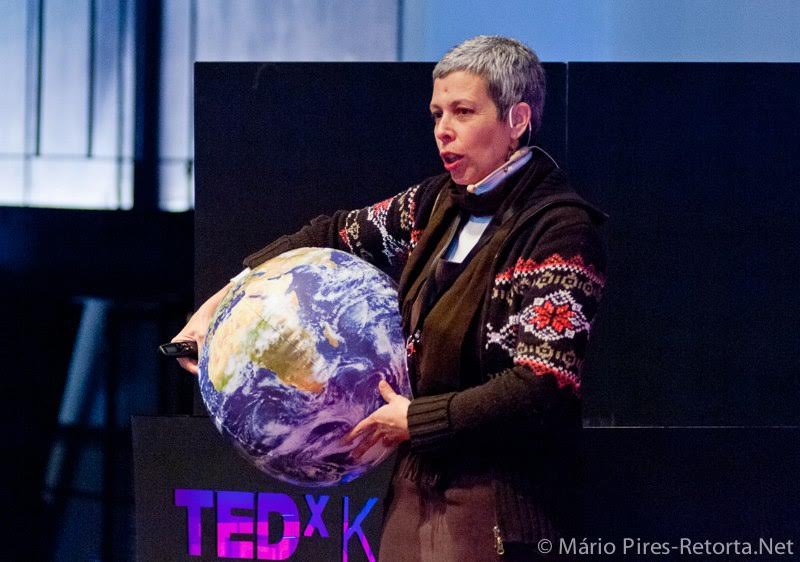Astronomy for Development: Roadmap towards “impact”
Working at the International Astronomical Union’s (IAU) Office of Astronomy for Development (OAD) since its inception in 2011 has certainly been quite a ride. The GAM blog has been an interesting annual reflection of the “astro4dev” journey. In 2012 my contribution to the GAM blog was on “Astronomy for a Better World” where I wrote about the very big picture of how we can use astronomy to make the world a better place. In 2013 I was less visionary and more practical in terms of what we were doing and how you could be a part of it. In 2014 I wrote about some of the lessons we had been learning along the path towards Astronomy for Development. This year I’m reflecting on the future with a focus on how we intend to make an impact in the long term.
GAM2015 comes at yet another exciting time in the life of the OAD - just after a major independent review of our activities (which went very well I should add); at the halfway point in the 2010-2020 decade (for which the IAU Strategic Plan was designed); and as we welcome new skills to the astro4dev family in the form of Eli Grant (who has already helped the OAD to shape an exciting new framework that we are in the process of building for all our projects – something we’re calling the “OAD Impact Cycle”).
Through the OAD’s annual open call for proposals we’ve supported 68 projects worldwide, involving over 40 countries (there’s a cool interactive map on our home page). That sounds and looks quite nice but the question that constantly rings in my head is “how do we know we’re making an impact?” Even more so, how do we know that in the long term, we will be able to say that we’ve achieved the objective of “astronomy for a better world”? Each year our call for proposals is oversubscribed with many great ideas and some really awesome people behind them. The reality though is that often these great ideas or project proposals do not build on previous great ideas, not necessarily through any fault of the project leaders, but simply because there’s no structure to support such an approach of “building on the shoulders of others” – this is where the OAD needs to play a role and also something that will be important for each project idea to be nurtured towards large scale impact.
Since the very inception of the OAD we have grappled with this issue of how to achieve some sort of recording and dissemination of “best practice” or “lessons” from projects such that there’s constant momentum in a positive direction without reinvention slowing down efforts – yes, as harsh as that word may sound, reinvention is a reality that needs to be addressed. We need to achieve a state where someone comes up with an idea and then can quickly access other people’s ideas from around the world to refine and optimize their own. They should be able to readily access relevant resources that may have been developed for a similar programme or activity in some other part of the world. They should be able to access research related to their project in an efficient, time-saving, user-friendly manner such that they can apply evidence-based techniques and methods to their own projects. Importantly, besides maximizing on the positive outcomes of a project, one should be able to minimize on the unintended negative outcomes, which may have been learned through another person’s experiences.
Throughout the life of the OAD we’ve played with different ideas for capturing this spirit of a positive feedback loop for projects – from using the OAD website as an interactive platform for project leaders to the idea of an astro4dev journal of best practice. None of the ideas took root until this most recent one which we refer to as the OAD Impact Cycle. The thing is, we had never really engaged sufficiently with the community of people who specialize in so called “intervention evaluation.” Evaluation of projects is critical if we want to build on lessons from previous projects. In December 2013 the OAD released a Monitoring and Evaluation Framework to support funded projects in evaluating their outcomes. This was developed in partnership with the University of Cape Town’s Institute for Monitoring and Evaluation. Now, our newest team member, Eli Grant, brings a wealth of experience from this field and will be a key person in implementing this “positive feedback” aspect of the OAD’s project dimension.
The OAD Impact Cycle is simply a high-level view of the process of how astro4dev projects will build on each other’s lessons and contribute to a library of best practice and resources. This library will eventually feed a global knowledge base (which includes knowledge from other fields apart from astronomy) and thus contribute to large scale delivery. The basic schematic of the principle of this Impact Cycle is illustrated in the diagram below:

The hope is that when we reach the point of large scale delivery (on the bottom right of the schematic) we can really start talking about a significant “impact” of astronomy on development.
Although the schematic appears quite basic and logical, it’s the nuts-and-bolts of this Impact Cycle which comprises the real hard work. We need to establish processes that will facilitate the smooth implementation of this cycle – processes that do not overwhelm or discourage someone with a potentially world-changing idea. We need to bring in researchers from the evaluation fields and development expertise. We need to interrogate every aspect of this cycle thoroughly and look at how it may influence our current way of working, which may include a rethink of how we coordinate the annual call for proposals - perhaps we need to have a two phased call for example, with letters of intent being the first port of call. We also need to be aware of, and possibly try to address, any existing cultures within the global science, education and outreach communities, which perhaps may not readily support such an approach.
As we shape this roadmap towards “impact” (and we remain, as always, open to hearing your thoughts and engaging with you during such shaping) we maintain, as our guiding beacon, the exciting big picture: that ultimately this whole idea is meant to empower individuals and help take your good astro4dev ideas from a doodle on your desktop to the point of global rollout!
***
 Kevin Govender began work at the OAD on 1st March 2011 as its first Director. He has extensive experience using astronomy for development, acquired during his previous position as the Manager of the Southern African Large Telescope Collateral Benefits Programme at the South African Astronomical Observatory (Cape Town and Sutherland sites). During that time he chaired the Developing Astronomy Globally Cornerstone Project in 2009 and served on the IAU Executive Committee Working Group for the International Year of Astronomy 2009. He was also part of the development of the IAU Strategic Plan since 2008, mainly due to his activities in developing astronomy across Africa. Prior to his work in astronomy-for-development activities, he held the position of Fast Neutron Scientist at the South African Nuclear Energy Corporation (Necsa). During his time at Necsa he was also closely involved with promoting physics at school level through the South African Institute of Physics and Necsa, serving also on the South African national steering committee for the International Year of Physics 2005. Kevin currently serves on numerous committees including the Academy of Science of South Africa’s STEM Committee; Quest magazine’s Editorial Board; and Scifest Africa’s Advisory Committee.
Kevin Govender began work at the OAD on 1st March 2011 as its first Director. He has extensive experience using astronomy for development, acquired during his previous position as the Manager of the Southern African Large Telescope Collateral Benefits Programme at the South African Astronomical Observatory (Cape Town and Sutherland sites). During that time he chaired the Developing Astronomy Globally Cornerstone Project in 2009 and served on the IAU Executive Committee Working Group for the International Year of Astronomy 2009. He was also part of the development of the IAU Strategic Plan since 2008, mainly due to his activities in developing astronomy across Africa. Prior to his work in astronomy-for-development activities, he held the position of Fast Neutron Scientist at the South African Nuclear Energy Corporation (Necsa). During his time at Necsa he was also closely involved with promoting physics at school level through the South African Institute of Physics and Necsa, serving also on the South African national steering committee for the International Year of Physics 2005. Kevin currently serves on numerous committees including the Academy of Science of South Africa’s STEM Committee; Quest magazine’s Editorial Board; and Scifest Africa’s Advisory Committee.
GAM - Over for another year
By Christie McMonigal
Over the past few years we have been increasing our presence on social media, and this GAM we have made some really big steps in this direction, along with decreasing the focus on the website.
This year we have set up an instagram account, started utilising the Facebook Live video function, and brought on board a social media manager to help guide our activity.
The reason we have turned out focus to social media is because that is where our community is. Across the globe, mobile phone usage is increasing, more than 50% of the time we spend on the internet is on our mobile phones. In addition to this, internet users in developing and emerging countries are much more frequent users of social networks than in the US and Europe. This is in part because smart phones are more accessible than desktop computers in these countries. So by increasing our social media presence we are better able to connect with our members in these developing countries.
These changes have had big impacts too - we can see that interaction on our social media channels has increased dramatically. Particularly, for videos, the Facebook Live videos have had many more views than videos in previous years which were uploaded to Youtube and our website, which means we are reaching a lot more people. By using Live videos too we are able to actively engage with our community during the videos, they are able to post comments and questions in real time during the video, which we can answer and which also promote discussion between our users.
Another innovation we started this year was GAM Daily. In addition to our regular GAM Blog and American Astronomical Society Random Astro-facts, we collaborated with IAU Inclusion Working Group (LINK) and AstroEdu to bring Astronomy for All and AstroEdu Daily Activities. Astronomy for All highlights a new resource or activity every day to help clubs and groups include people with disabilities in their activities, while AstroEdu Daily shared a new astronomy education activity every day, often related to the different activities occurring during GAM.
All of these activities have had a fantastic impact, helping us connect with more people around the world, in particular helping them connect with us. We have had hundreds of photos, videos and event reports shared with us by people all over the world.
As GAM coordinator the thing that I love most about this role is seeing how people around the world celebrate, the similarities and the differences and the varied challenges presented by different locations. I love the photos of people looking through a telescope for the first time, children staring in wonder at the sky and the joy of seasoned astronomers when they get to share their passion.
So once again thanks to you our community for making GAM the amazing experience it is.
 Christie McMonigal is the coordinator of Global Astronomy Month and an Australian science communicator with a strong focus on astronomy. She has worked in education and outreach with a number of organisations including Questacon - The National Science and Technology Centre and Sydney Observatory. She currently works with the University of Technology Sydney, coordinating the outreach and recruitment programs for the Faculty of Science.
Christie McMonigal is the coordinator of Global Astronomy Month and an Australian science communicator with a strong focus on astronomy. She has worked in education and outreach with a number of organisations including Questacon - The National Science and Technology Centre and Sydney Observatory. She currently works with the University of Technology Sydney, coordinating the outreach and recruitment programs for the Faculty of Science.
Christie has a passion for sharing her love of science with the general public. She feels science, in particular physics and astronomy, is a vital part of our everyday lives and she loves to use science to engage and inspire people of all ages.
Once upon a star
By Rosa Doran

Often, when you tell someone that you are an astronomer you immediately receive a smile spiced with surprise. The feeling is mixed; and you wonder what does that smile mean ? The person looking at you:
Option 1 → really loves astronomy and is happy with the prospect of some nice exchange of information;
Option 2 → knows nothing about the topic but would really like to learn more;
Option 3 → thinks you maybe can make their horoscope.
In any case the feeling is good. Either you have the opportunity to discuss some nice news related to the field, or share some amazing facts that the person might not have heard before or simply share awareness for the difference between science and beliefs. What really drives me mad is when someone pretends they know exactly what astronomy is all about with a sentence like: “oh cool, I also like to see the stars ...” as if this encompasses everything. Drives me mad when people that can have influence think of astronomy as a far sister to important science or just as a romantic need to know more, which in fact is not important at all to our daily lives. My immediate reaction is to scream out loud: “wake up, astronomy is the essence of what we are!!! It is not just some constellations we see in the skies, if we are lucky. We are literally made out of star dust and if there is more life in this vast Universe it will most probably be made of the same material as we are. We don’t yet know if the Universe we naively call our own is all there is and we have no idea where it all came from and what will be its future. But we do know a lot, considering we are a very tiny piece of this amazing place that we are barely starting to understand.
Well, what is the reason for that. Simple, light pollution!!!
I am sure I have your attention now, don’t I J You are probably thinking if there could be some subtle, yet not explored consequence of light pollution in our brains. Well, not directly but indirectly by preventing the natural interest of human beings to question our very existence. Those of us who have the privilege to find ourselves under amazing starry skies know that it is impossible not to question what is this amazing cluster of jewels hanging above our heads. If there are more habitable worlds out there and if we will ever be able to go there. Human beings that don’t relate themselves to the skies will be unaware of our place in the cosmos, and as such, not self-aware of our illusional self-importance can be a menace to our life in this beautiful planet. Have you seen people like this around? Ask them if they know the scale of the Universe or how many galaxies are out there? You will be surprised. I will not ask if you know since you are reading this article, so you certainly know J!
City lights, or better saying, poorly built streets illumination, are the main source of light pollution. It translates into bulbs illuminating the skies, affecting the whole ecosystem and deeply affecting creatures, including ourselves. It doesn’t serve its main purpose which is illuminating the streets and creating a better and safer environment and it “steals” our dreams.
This can be easily solved with properly built poles where lamps are fully shielded. The result is less energy expenditure, less harming to the environment and improvement of our health and of course giving back to us the beautiful dark skies, full of stars. Although the solution is simple, its implementation not so much. It is necessary to create awareness about this problem, to identify the causes, highlight consequences and propose solutions.
Now you are probably thinking, yeah, right … so you really expect people to do that? Well, not really. In partnership with NOAO, my institution (NUCLIO) started, in 2009, a project called Dark Skies Rangers (https://www.globeatnight.org/dsr/; http://dsr.nuclio.pt/). The main objective is to involve students in actions to prevent light pollution in their localities. They are invited to conduct audits of the school’s streets, the streets where they live and any other location they can reach. They later deliver their audit to the mayor’s office, with the identification of how much the municipality could save and also pointing out the diverse problems originated by this problem. Hundreds of schools and thousands of students have already participated in the project and we are very confident that the future looks a lot less bright and full of wonder!!!
Starry skies to everyone.
 Rosa Doran holds a degree in physics and a PhD in Scienec Education. her professional activities from 1979 to 1992 were connected to industry management in finance and administrative areas. Since 1992 her main activities are related to science research, public outreach and science education. Her outreach and science education activities in Portugal are developed in cooperation with NUCLIO - Núcleo Interactivo de Astronomia, a non-profit association from which she is a founding member and president of the Executive Council. At an international level she is the vice-president of the executive council of the Global Hands-on Universe Association, a global institution devoted to Astronomy Education.
Rosa Doran holds a degree in physics and a PhD in Scienec Education. her professional activities from 1979 to 1992 were connected to industry management in finance and administrative areas. Since 1992 her main activities are related to science research, public outreach and science education. Her outreach and science education activities in Portugal are developed in cooperation with NUCLIO - Núcleo Interactivo de Astronomia, a non-profit association from which she is a founding member and president of the Executive Council. At an international level she is the vice-president of the executive council of the Global Hands-on Universe Association, a global institution devoted to Astronomy Education.
She is also the chair of the Galileo Teacher Training Program , one of the cornerstones and a legacy of the International Year of Astronomy 2009. Vice-Chair of the panel of education of COSPAR. Coordinator of the Portuguese Language office of Astronomy for Development for the IAU (International Astronomical Union). She is the general coordinator of international projects for NUCLIO. At an European Level I can mention a few important EC funded projects to which NUCLIO was the national representative: Discover the Cosmos, European Hands-on Universe, Open Discovery Space, Inspiring Science Education among others.
Rosa was the community building leader for the project Go-Lab (online labs for science education) and is now the PI for the project PLATON (a project that promotes Inquiry and Interdisciplinarity). She leads the cooperation efforts with other international outreach and educational programs in Portugal: International Astronomical Search Collaboration, Dark Skies Rangers, Astronomers Without Borders, Universe Awareness, etc.





